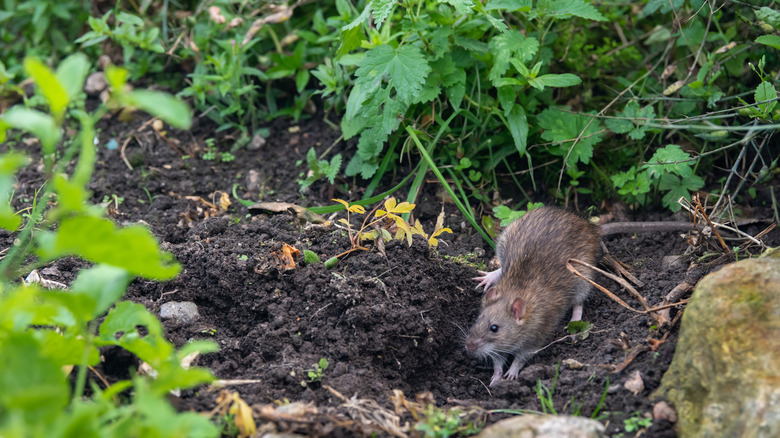Your Rat Problem Will Be A Thing Of The Past After Planting This Stunning Flower
Rats can pose a real problem for gardens. Not only are they a nuisance, but they can also destroy the plants you've worked hard to cultivate and spread diseases such as salmonellosis and a variety of other harmful bacteria. They can also cause quite a bit of damage by burrowing beneath gardens, fences, and other structures. So, it is little wonder that those who find their gardens invaded by these troublesome rodents are desperate to find a solution to eliminate them. Luckily, gardeners can rid themselves of rats by doing what they do best — growing plants. In this case, your rat problem will be no more after planting daffodils.
Daffodils are not just another pretty flower. While they are certainly beautiful, they are also a plant that repels pests. Sme gardeners use daffodils to repel moles, but they are equally effective on mice and rats. They also help deter animals such as cats and dogs from wandering through gardens. Just as important as what they keep out, is what daffodils attract to gardens. Their bright, pollen-rich flowers attract many insects that are beneficial to gardens. Given the multitude of benefits they provide, it is practically a no-brainer to plant daffodils in any garden or flower bed.
Planting daffodils to repel rodents from your garden
There are a few things to keep in mind when planting daffodils in your garden or flower bed. The first consideration is when to plant these blooming bulbs. Although they bloom in spring and you are likely anxious to get them in the ground so they can start repelling rats, fall is actually the best time to plant daffodil bulbs. It is best to purchase deer and rodent resistant daffodil bulbs when they can be planted once the ground temperature has begun to cool off, which can range from September to November depending on the area of the country.
It is also essential to choose the proper location to plant daffodils. They tend to grow best in sunny areas, so typically are better on the edges of gardens as opposed to being obscured behind larger plants. Additionally, although they require quite a bit of water while growing, the area should drain well, as standing water is not good for daffodils.
When it comes time to put the bulbs in the ground, utilizing a tool such as the Flora Guard bulb planter will make creating uniform holes much easier. According to the American Daffodil Society, the depth of the hole is determined by the size of the bulb. Bulbs should be planted point up and that point should be twice as deep beneath the surface as the entire bulb is tall. Individual bulbs should be spaced 3 to 6 inches apart, although some gardeners choose to plant multiple bulbs in a small circumference space to create a bouquet effect.

